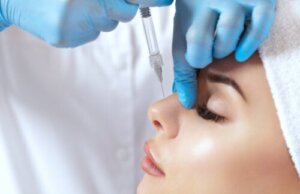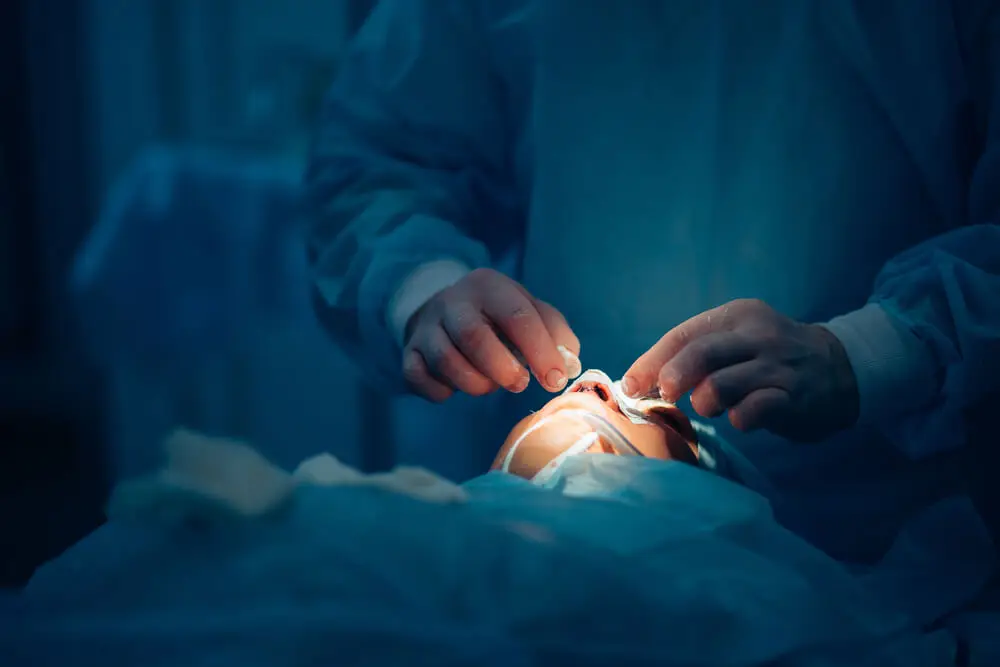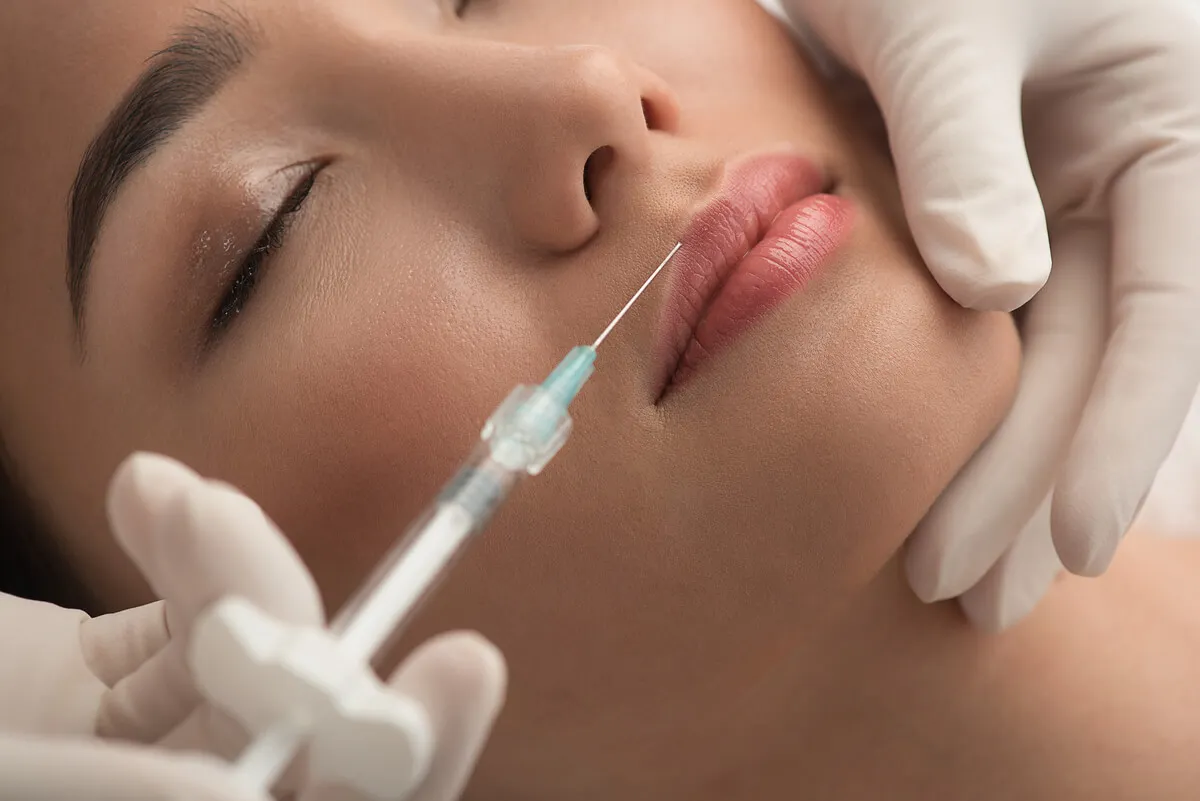What is Rhinomodelation and What Are its Advantages?


Reviewed and approved by the nurse Leidy Mora Molina
Among the many different aesthetic procedures that exist today, rhinomodeling offers some advantages to improve the appearance of the nose without the need to undergo surgery. In particular, hyaluronic acid is infiltrated into the nose in this treatment.
This substance molds the skin to help correct some irregularities in the nose. However, it also has its risks and limitations. Let’s take a closer look.
What is rhinomodeling and what is it done for?
The word rhinomodeling is a composition of the word rhino (nose) and modeling. This procedure consists of molding the nose without the need for surgery to correct various aesthetic problems.
To do this, fillers are injected. The most common is hyaluronic acid. Among the purposes sought with rhinomodeling, the following can be mentioned:
- Disguise the size of the nose
- Improve the nasal ridge
- Modify the nasolabial closure
- Moderate the width of the flaps
- Profiling the tip and correcting tip droop
- Transform deformities, protuberances, deviations, and/or slight asymmetries
All this is done always seeking to improve the harmony of the face. However, rhinomodeling can also be applied to counteract unwanted results of a previous rhinoplasty.

What’s the procedure like?
The rhinomodeling procedure is quick and simple. It’s performed on an outpatient basis, so it doesn’t require hospitalization or any particular preparation.
It’s not common that the person is asked to undergo any kind of tests, except in cases where allergies to fillers or allergies to local anesthetics are suspected.
Of course, studies of the face and nose are performed. Computer simulations are even run in order to determine the best shape to be modeled. It should be noted that the procedure must be performed in spaces that meet the appropriate sanitary conditions and by health professionals.
In general, rhinomodeling is performed following these steps:
- Local anesthesia is applied to the area to be treated. Then, the specialist waited a few moments for it to take effect.
- They then proceed with microinjections of hyaluronic acid. However, calcium hydroxyapatite can also be used, which promotes the production of collagen.
- The injections are placed strategically on the bridge or on the tip of the nose depending on the shape that’s expected to be achieved.
- The hyaluronic acid is in liquid form but hardens as it enters the skin, so no bandages or splints are required.
Rhinomodelation takes between half an hour and 45 minutes. Once the procedure is completed, the patient can leave without the need for a recovery period.
We think you may be interested in reading this, too: The Different Types of Nose Shapes: What’s Yours?
Care after rhinomodelation
Despite its apparent simplicity, patients must observe a series of post-rhinomodelation care procedures, especially during the first few days following the procedure:
- Don’t sleep on your stomach.
- Discontinue wearing glasses.
- Don’t touch or pinch your nose.
- Rest for 48 hours after the procedure.
- Avoid exposure to the sun or intense heat.
- Avoid strenuous physical activity, especially those in which you could hit your nose.
It’s also recommended to start wearing sunscreen frequently, as premature aging is a contributing factor to the loss of natural hyaluronic acid.
Advantages and limitations
Rhinomodeling has its advantages over other cosmetic procedures. For example, compared to surgery (rhinoplasty), there is less chance of infection as there are no open wounds.
It’s also less painful and less invasive. Plus, it leaves no scars. In addition to these benefits, recovery is shorter. Another advantage is that hyaluronic acid is a resorbable substance.
The results are immediately visible, although they often have a limited duration. On average, this is usually 12 months. After that, the procedure must be repeated. If authorized by the physician, polymethylmethacrylate can be used for a more permanent result.
Polymethylmethacrylate is not authorized in all countries. Some drug agencies have banned it because of its risks.
One limitation of this procure that’s important to bear in mind is that it only corrects some aesthetic problems. As such, it can’t modify the bone base or cartilage. Nor does it bring benefits for breathing, unlike what can occur with functional rhinoplasty.
Like this article? You may also like to read: Get Rid of Pimples on Your Nose with These 4 Homemade Remedies
Reactions and side effects of rhinomodelation
In the days following rhinomodelation, there are usually certain reactions, such as redness or swelling of the area, as well as small bruises. For this, anti-inflammatory drugs and ointments are prescribed.
On the other hand, although not frequent, there can be side effects of hyaluronic acids, such as granulomas, allergic reactions due to hypersensitivity, and even skin necrosis. There’s also a risk of infections, and nasal breathing may be affected, depending on the anatomical characteristics of the patient’s nose.
Finally, some results may not be esthetically satisfactory, presenting asymmetries. In these cases, if the patient wishes, the hyaluronic acid can be removed.

Who is it recommended for?
It’s important to remember that, with rhinomodeling, only some slight imperfections can be corrected. Therefore, it’s not useful in alterations such as a prominent ridge, a very large nose, or a deviated septum. In these cases, other procedures are recommended, such as a traditional rhinoplasty or an ultrasonic rhinoplasty.
On the other hand, rhinomodeling shouldn’t be applied in minors, the formation of their nose isn’t fully developed, and this may affect their sense of smell. It’s also not recommended for people with coagulation disorders.
All cited sources were thoroughly reviewed by our team to ensure their quality, reliability, currency, and validity. The bibliography of this article was considered reliable and of academic or scientific accuracy.
- Alcalá PD, Martínez GEC. Rinomodelation with Fillers . Dermatología Cosmética, Médica y Quirúrgica. 2017; 15(1): 56-58.
- Barrera J.Application of Ultrasonic Piezoelectric Technology for Rhinoplasty.Facial Plastic Surgery & Aesthetic Medicine. 2022; 165-167. http://doi.org/10.1089/fpsam.2022.0029
- Collado-Chagoya R, Cruz-Pantoja R, Hernández-Romero J, León-Oviedo C, et al . Alergia a anestésicos locales: serie de casos y revisión literatura. Rev. mex. anestesiol. 2019; 42(4): 296-301.
- Fernández L, Minzer S, Sarmiento D. Rinomodelación y uso de Metacrill® en la punta nasal: Revisión de la literatura y presentación de un caso. Rev. Otorrinolaringol. Cir. Cabeza Cuello. 2015; 75(3): 251-256.
- Lanzas Pérez J, Lerma García D. Rinomodelación sin cirugía con ácido hialurónico de alta reticulación. International Congress of Body Image & Health (BIAH); 2018: 152.
- Zambrana Rojas M. Rinoplastía estética y funcional. RBCP. 2021; 1(2): 34-39.
This text is provided for informational purposes only and does not replace consultation with a professional. If in doubt, consult your specialist.








